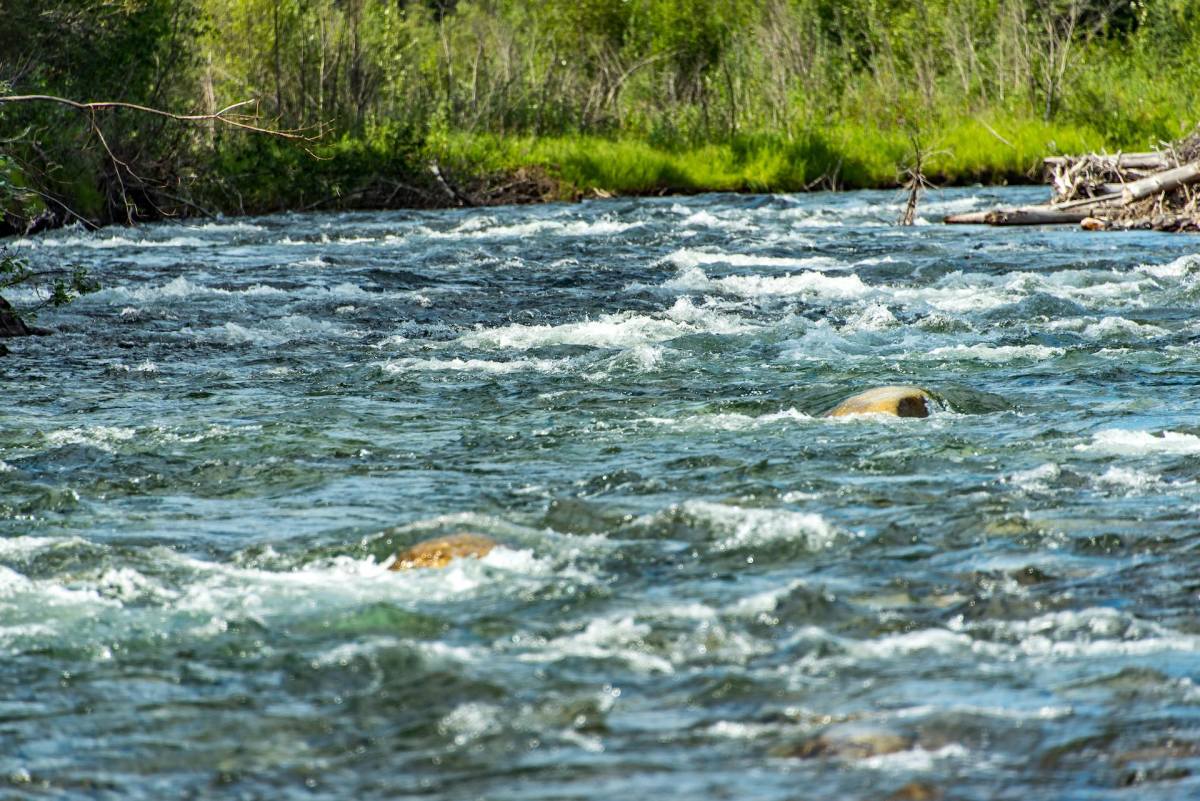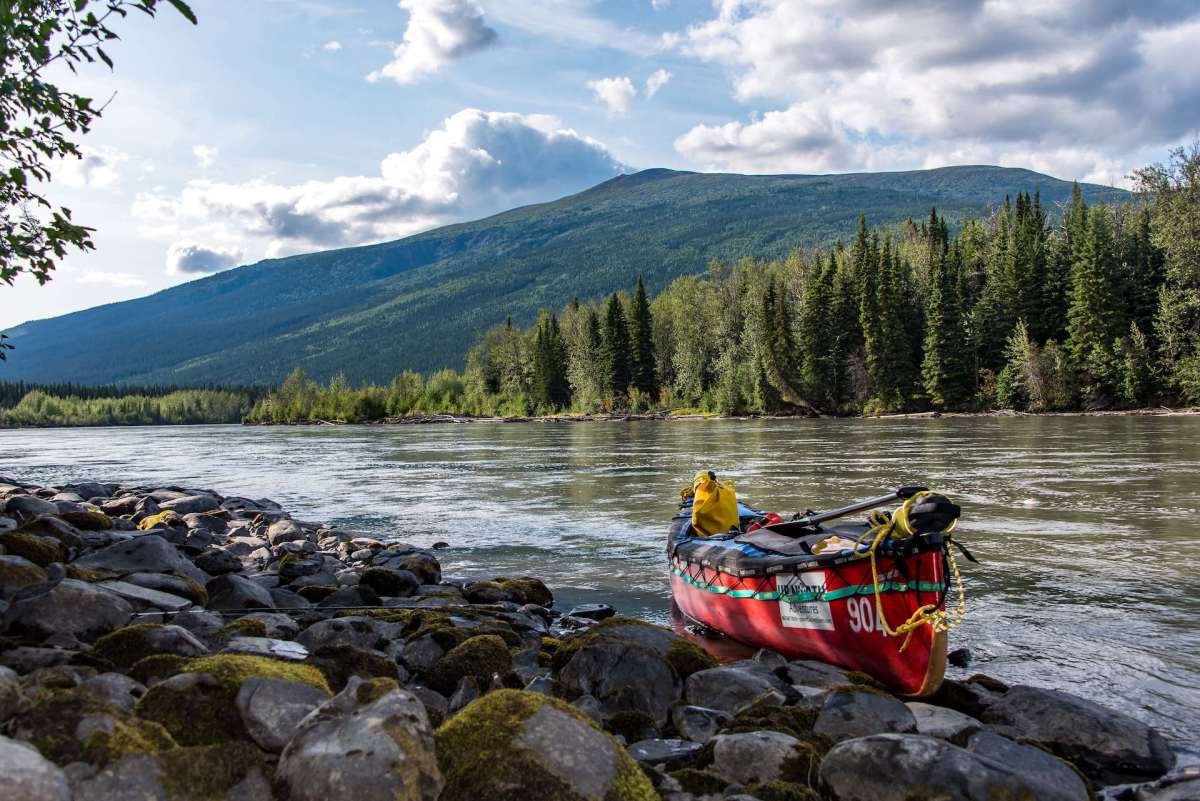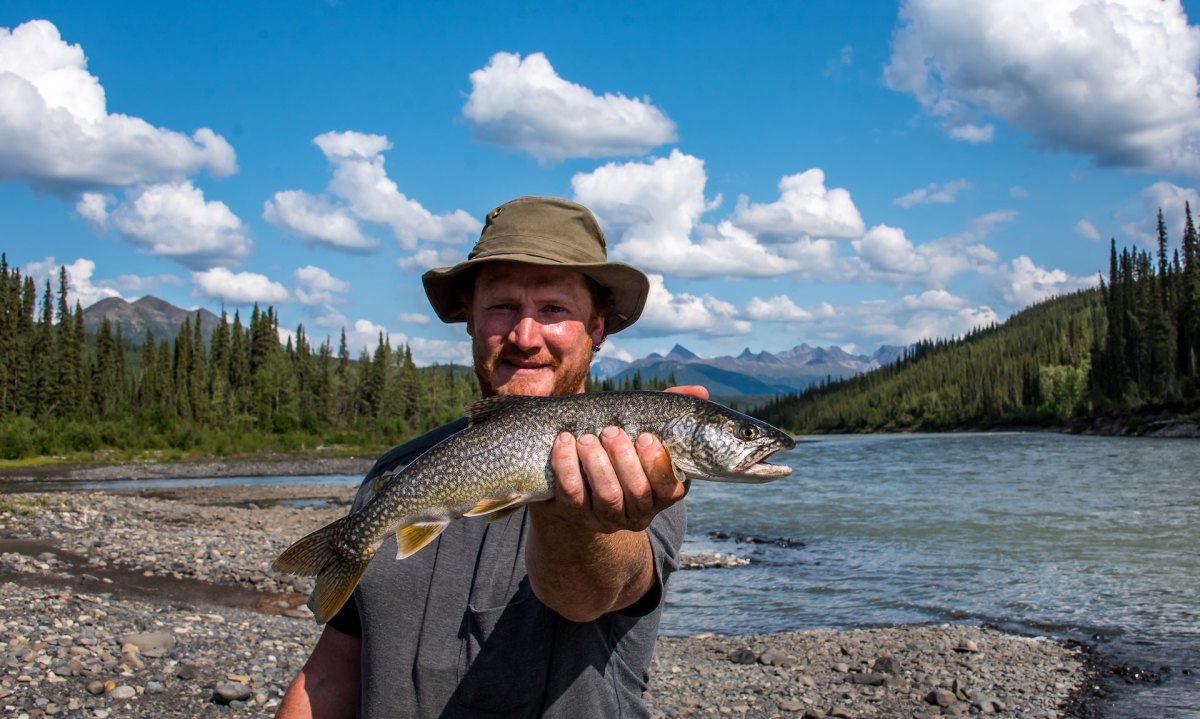Every year, fishermen and through-hikers alike run into problems fording rivers and creeks. The problem is that the power of moving water can be deceiving. Even a stream that’s just 2 feet deep, running at 5 mph exerts more than 200 pounds of pressure. When someone heads into that current unprepared for this force, it can cause the crosser to lose footing—and then lead to larger problems with potentially icy waters. Add the exposure of being distant from emergency medical services, and sadly, this exact scenario often results in fatalities from hypothermia and drowning.
Don’t become a cautionary tale. Here are six tips to help you cross a moving waterway more safely, so you can get on some fish, or get on your way.

Find the safest place to cross
Look for a shallower spot in the stream; an area where the water is smoother on the surface usually means there’s a smoother streambed below.
Avoid crossing upstream of an obstruction such as a rapid or a downed tree that has fallen in the water.
Use a walking stick
This can make all the difference. Trekking poles or a paddle will do the trick. If you don’t have those, consider finding a sturdy walking stick before you cross.
Face upstream
Where the current gets deep and fast, face upstream with your knees bent in a stable, athletic position and step sideways without crossing your legs at each step.
Don’t slip
Oftentimes, you won’t be able to see the bottom clearly. To avoid foot entrapment between two boulders or stepping on a smooth, slippery river rock, make sure you feel the bottom of the river with your foot to make sure it’s a safe place to step before committing.
Don’t fight the current
As you move sideways across deep, strong current, letting it push you downstream a little bit as you step will create less resistance, and ultimately get you across the stream more easily.
Unbuckle your straps
If you’re backpacking, make sure you unbuckle your sternum strap and hip belt before entering the water. This way, if you lose your footing and dunk, you can quickly ditch your pack if necessary. Otherwise, it could weigh you down and prevent a self-rescue.

Jim Baird and his brother Ted were the winners of the 2016 season of History Channel’s ALONE survival show. Check out ‘The Things We Carried‘ on the 10 pieces of gear essential to their survival success. Watch Baird’s Saskatchewan Safari, a four-episode series following an expedition down the remote Porcupine River.

This past summer, Baird completed a solo canoe descent of the Hess and Stewart rivers in Canada’s fabled Yukon. Along the Hess (known as one of most challenging canoe-able whitewater rivers in the expansive territory), Baird used and learned multiple outdoor skills to successfully complete his journey—plus a few proven survival tips he always keeps up his sleeve. Watch more from the solo adventure here:
from Men's Journal https://ift.tt/32tUKdR
No comments:
Post a Comment